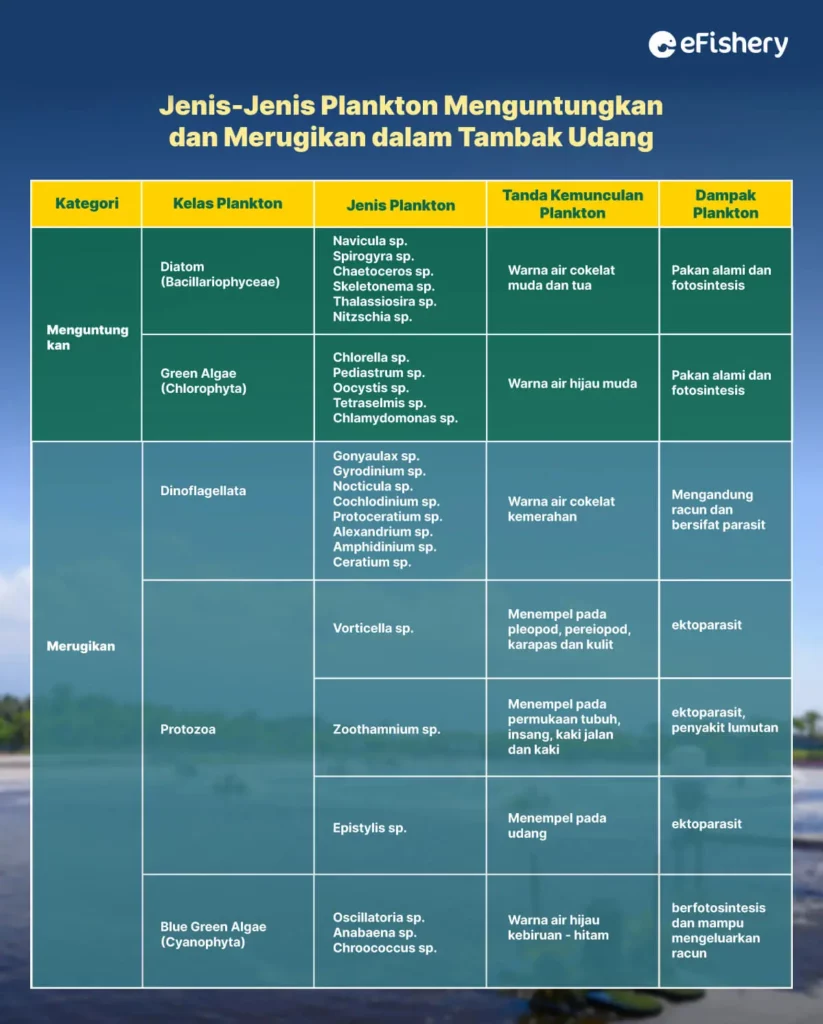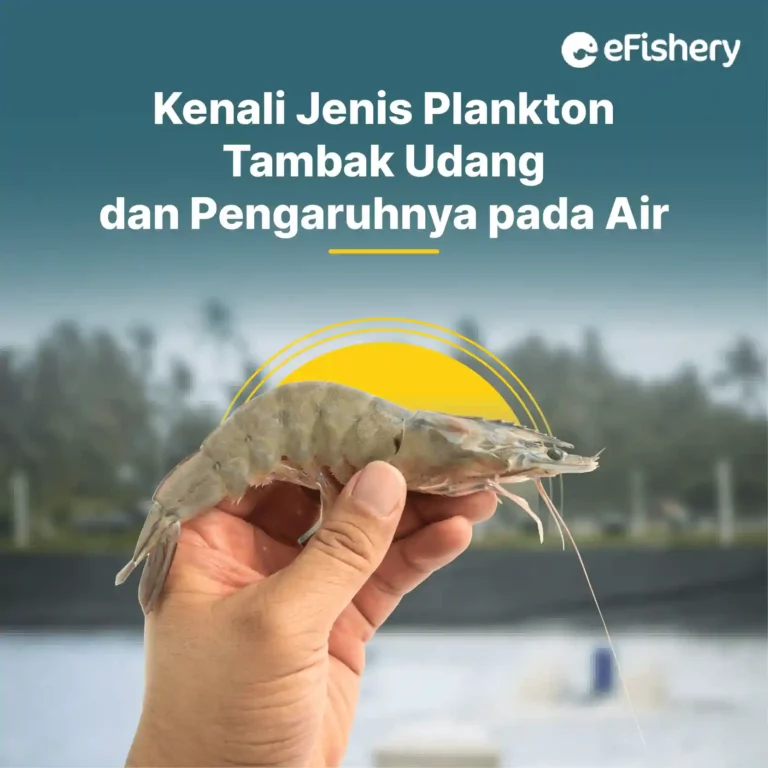Artikel Ini Telah Direview Oleh:

Nabilla Anggi
Magister Budidaya Perairan
Plankton is a group of organisms that exist in water. There are two types of plankton in shrimp ponds, namely phytoplankton and zooplankton. In shrimp ponds, plankton can be a natural food for shrimp and an indicator of water quality.
The high diversity of plankton indicates that the environmental conditions of the shrimp ponds are stable. However, not all types of plankton are good for pond water. There are types of shrimp pond plankton which are not recommended to dominate in aquaculture ponds because it will affect the water quality in shrimp ponds. Check the full explanation here!
Types of Plankton in Shrimp Ponds
There are many types of plankton that are easy to find in shrimp pond water. The following is a table of plankton types in shrimp ponds:

Class green algae type Chlorella It is commonly found in ponds because it is easy to grow in various nutrient conditions, and the color it produces is light green. These plankton contain chlorophyll so that they are able to photosynthesize directly and become a natural food contributor in pond waters.
Diatoms or Bacillariophyceae are natural food that are preferred by shrimp compared to other types of plankton. This class is cosmopolitan, fast growing and most commonly found in ponds.
Dinoflagellates are detrimental to shrimp because they have plankton flagella which produces toxic compounds that can kill shrimp, while protozoa is one of the ectoparasites that can infect shrimp. The percentage of dinoflagellates and protozoa in shrimp ponds should not be more than 5%.
Cyanophyta or blue-green algae causing the waters to turn blue green or even black and some types are capable of releasing toxins which can be harmful to shrimp.
Get to Know the Types of Plankton for Shrimp Ponds in Detail with eFarm!
Need Help Regarding Shrimp Cultivation Business?
Fill in your personal data in the following form. Our team will immediately contact you via the number cellphone attached. Make sure the data entered is correct.
Plankton in the waters needs to be controlled and its type identified, because it will affect shrimp productivity, so it is necessary to maintain optimal plankton conditions in the waters. Plankton control and identification can be done by looking at the color of the water in the pond, checking with a microscope, or you can consult plankton problems through eFarm.
eFarm is an application that makes it easier for Mr/Mrs who want to learn about shrimp farming. This app provides features Cultivation Consultation which makes it easier for you to consult on shrimp farming issues. This feature can be accessed for FREE. Interesting right?
Visit eFarm now, to join thousands of other farmers!

Nabilla Anggi - Magister Budidaya Perairan
Nabilla merupakan lulusan sarjana dan magister budidaya perairan serta memiliki pengalaman di dunia perikanan baik hatchery maupun pembesaran
Questions Regarding the Types of Plankton in Shrimp Ponds
Plankton green algae type Chlorella and Diatoms or Bacillariophyceae including those that are profitable in shrimp pond waters. Chlorella contains chlorophyll so that it can photosynthesize directly and become a natural food contributor in pond waters. Bacillariophyceae is a natural food that is preferred by shrimp compared to other types of plankton.
Harmful types of plankton, namely Dinoflagellates, Protozoa, and Blue Green Algae. Dinoflagellates have flagella which produces toxic compounds that can kill shrimp. Protozoa is one of the ectoparasites that can infect shrimp. Blue Green Algae causing the waters to turn blue green or even black and some types are capable of releasing toxins which can be harmful to shrimp.
- Afdilla, A., GA Sutarjo, and D. Hermawan. 2022. Identification of types and abundance of plankton in intensive ponds at PT. Bentala Windu Probolinggo, East Java. Publication Manuscript of University of Muhammadiyah Malang. 1-16.
- Mansyah, YP, D. Mardhia, and Y. Ahdiansyah. 2020. Identification of types of phytoplankton in vannamei shrimp ponds (Litopenaeus vannamei) LSO AV3, Utan District, Sumbawa Regency. Indonesian Journal of Applied Science and Technology. 1(1): 1-9.
- Utojo. 2015. Plankton diversity and water conditions for intensive and traditional ponds in Probolinggo, East Java. biosphere. 32(2): 83-97.
